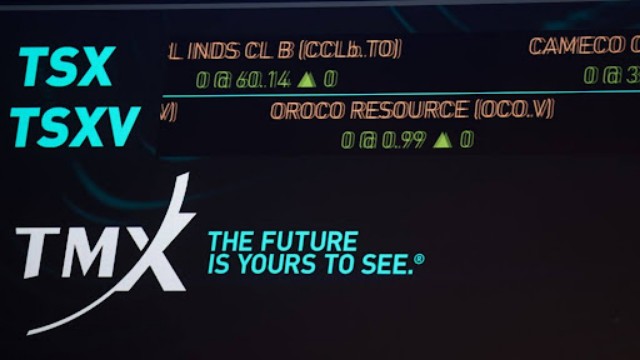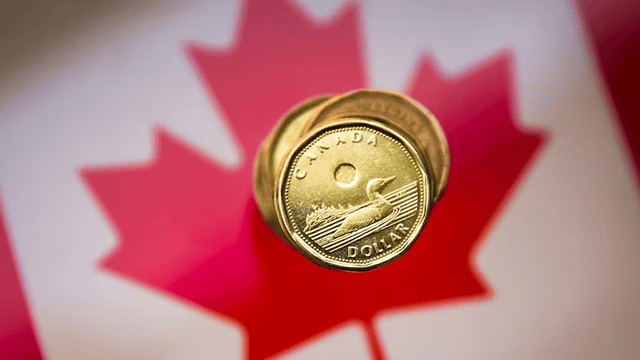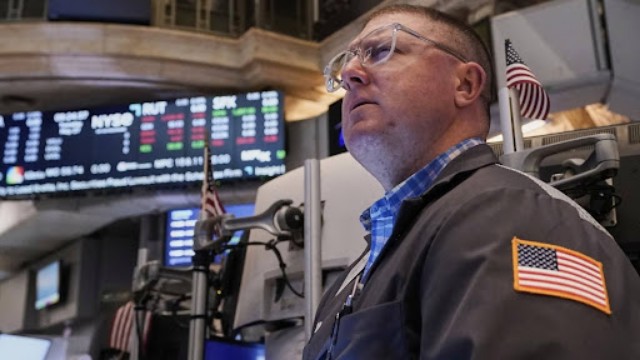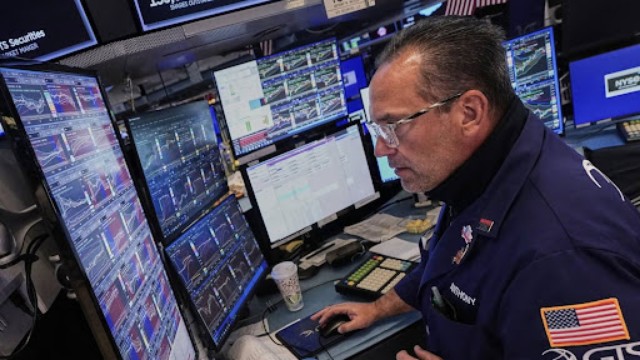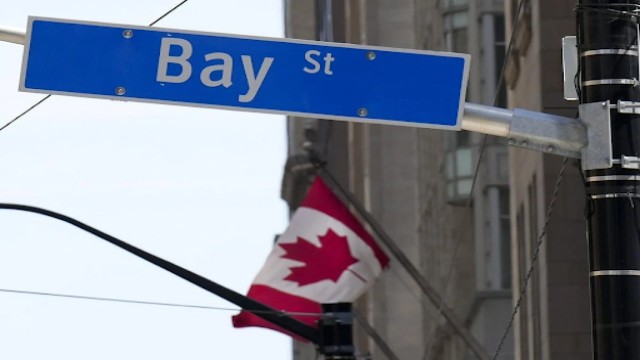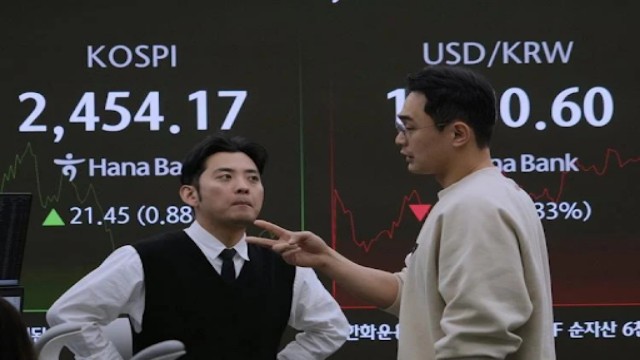
Traders monitor the Korea Composite Stock Price Index (KOSPI) and the exchange rate between the U.S. dollar and South Korean won at KEB Hana Bank's main office in Seoul on Monday, April 14, 2025. (AP Photo/Ahn Young-joon)
Asian stock markets opened the week on a strong note, boosted by a wave of optimism following a solid finish on Wall Street. On Monday, investors reacted positively to U.S. President Donald Trump’s announcement that electronics like smartphones and laptops would be spared from high import tariffs, a move that softened the blow of ongoing trade disputes.
Major markets across the Asia-Pacific region saw sharp gains. Japan’s Nikkei 225 jumped 1.8% to close at 34,189.37, while South Korea’s Kospi index edged up by 0.8% to 2,452.42. In both countries, tech shares were among the biggest winners. Tokyo Electron rose 2%, and Advantest, which makes semiconductor testing tools, soared 5.4%. Samsung Electronics, South Korea’s tech giant, also climbed 1.4%.
Hong Kong’s Hang Seng Index rose 2.4% to 21,419.59. In mainland China, the Shanghai Composite advanced 0.9% to 3,266.26, fueled by news that China’s exports spiked 12.4% in March compared to the same time last year.
The uptick in Asian markets followed a turbulent but ultimately positive week on Wall Street. On Friday, the S&P 500 closed 1.8% higher at 5,363.36. The Dow Jones rose 1.6% to 40,212.7, and the Nasdaq jumped 2.1% to 16,724.46. These gains capped a week marked by extreme swings and mounting concern over U.S. bond yields.
In a rare move, Trump decided to exclude consumer electronics from his latest round of tariffs. This announcement came just after China had declared it would increase tariffs on American goods by as much as 125%, escalating a tit-for-tat trade battle that’s already put markets on edge. China’s Ministry of Commerce cautiously welcomed the exemption but urged the U.S. to roll back tariffs entirely.
Economists worry that the standoff between the world’s two biggest economies could trigger a global slowdown, despite recent steps to ease tensions with countries other than China. Australia’s S&P/ASX 200 also reflected the upbeat mood, rising 1.5% to 7,758.70. Taiwan’s Taiex index, tied closely to chip exports, gained 0.6%.
Bond markets, usually calmer than stocks, have been flashing warning signs. The yield on the 10-year U.S. Treasury stood at 4.466% on Monday, down slightly from a peak of 4.58% last Friday. The surge in yields over the week has spooked investors, hinting at deepening concerns over America’s economic stability. Factors like hedge fund selloffs and foreign investors dumping U.S. bonds could be playing a role.
Meanwhile, gold prices touched a new high, trading at $3,249 per ounce. The metal’s rise highlights investor unease, as many seek safer bets amid the chaos. Falling oil prices and a dip in the U.S. dollar added to the mixed signals from the market.
Despite the chaos, there were some bright spots. Major U.S. banks released earnings that beat expectations. JPMorgan Chase reported a 4% increase in profits, Morgan Stanley added 1.4%, and Wells Fargo, despite a loss of 1%, showed strength in key areas.
Elsewhere in commodity trading, U.S. crude oil fell 20 cents to $61.30 a barrel, and Brent Crude dipped to $64.56. Currency markets also saw movement: the U.S. dollar weakened against the yen, dropping to 143.05, while the euro climbed to $1.1379.
This mix of gains, losses, and uncertainty paints a complicated picture of a global economy reacting to volatile politics, shifting trade policies, and evolving investor sentiment.


